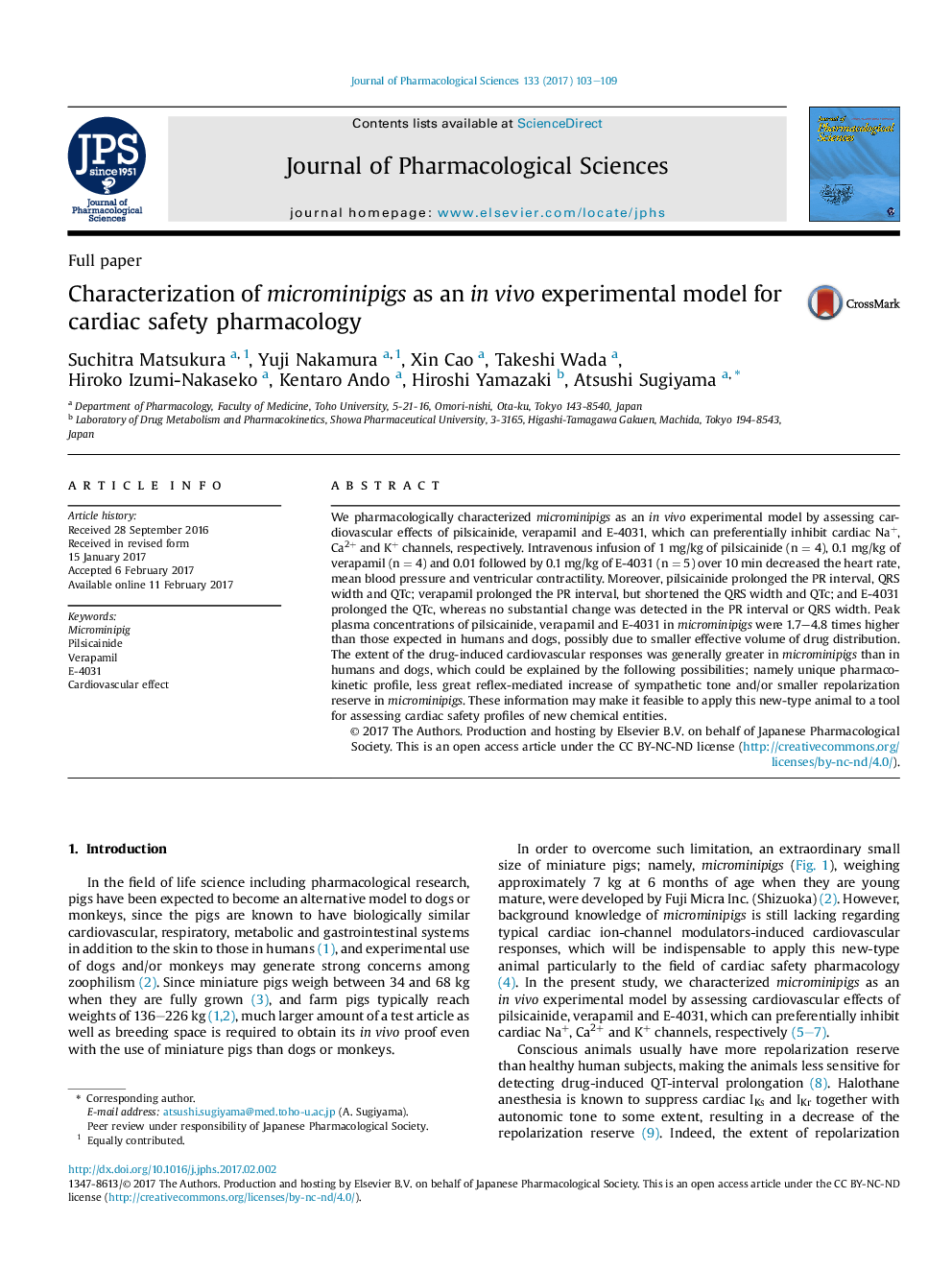| Article ID | Journal | Published Year | Pages | File Type |
|---|---|---|---|---|
| 8533455 | Journal of Pharmacological Sciences | 2017 | 7 Pages |
Abstract
We pharmacologically characterized microminipigs as an in vivo experimental model by assessing cardiovascular effects of pilsicainide, verapamil and E-4031, which can preferentially inhibit cardiac Na+, Ca2+ and K+ channels, respectively. Intravenous infusion of 1 mg/kg of pilsicainide (n = 4), 0.1 mg/kg of verapamil (n = 4) and 0.01 followed by 0.1 mg/kg of E-4031 (n = 5) over 10 min decreased the heart rate, mean blood pressure and ventricular contractility. Moreover, pilsicainide prolonged the PR interval, QRS width and QTc; verapamil prolonged the PR interval, but shortened the QRS width and QTc; and E-4031 prolonged the QTc, whereas no substantial change was detected in the PR interval or QRS width. Peak plasma concentrations of pilsicainide, verapamil and E-4031 in microminipigs were 1.7-4.8 times higher than those expected in humans and dogs, possibly due to smaller effective volume of drug distribution. The extent of the drug-induced cardiovascular responses was generally greater in microminipigs than in humans and dogs, which could be explained by the following possibilities; namely unique pharmacokinetic profile, less great reflex-mediated increase of sympathetic tone and/or smaller repolarization reserve in microminipigs. These information may make it feasible to apply this new-type animal to a tool for assessing cardiac safety profiles of new chemical entities.
Related Topics
Health Sciences
Pharmacology, Toxicology and Pharmaceutical Science
Pharmacology
Authors
Suchitra Matsukura, Yuji Nakamura, Xin Cao, Takeshi Wada, Hiroko Izumi-Nakaseko, Kentaro Ando, Hiroshi Yamazaki, Atsushi Sugiyama,
